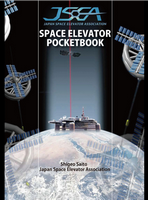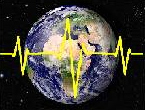 In a recent post on the Space Travel Exploration and Tourism website, the author(s) talk about the Space Elevator and bring up several potential problems.
In a recent post on the Space Travel Exploration and Tourism website, the author(s) talk about the Space Elevator and bring up several potential problems.
The first one is the lack of a material strong enough and of course this is true. As we all know, however, this problem is being worked on by an ever-growing body of scientists and engineers.
The article also says that “laser-power-transfer systems have never been built“. The authors are clearly unaware of the NASA-Spaceward Space Elevator Games – Climber / Power Beaming competitions where several teams have built precisely this type of system. Yes, they are small and essentially prototypes, but they show the concept works and a little birdie has told me that the next Power Beaming competition will be even more ambitious. Also, there is at least one company (LaserMotive) that is now in business to provide precisely this type of product.
They also bring up the problem of Space Debris – perhaps I should send them a copy of the recently released ISEC Report on the topic (which concludes that this is a solvable engineering problem).
Finally they bring up the issue of what happens ‘when the cable breaks’ – they say you certainly wouldn’t want to be under it when that happens. Let’s remember that the tether will be shaped as a ribbon for the great majority of its length (the length outside of the atmosphere). This will not ‘fall’ to earth, but rather ‘float’ to earth. It will almost certainly be winched in while it is fluttering down. Messy, yes. A disaster for those underneath it, no.
Finally they say that “Heights of up to 65,000 km have been suggested.” Actually, the working model is 100,000km in height, not 65,000 km.
Publicity is almost always good of course, but at some point I hope that people will do a bit of research about the current ‘state-of-the-art’ of the Space Elevator before writing about it.
 For the very first (and, hopefully, only) time, I’m sorry I’m not an Apple guy. The Japan Space Elevator Association has just released a Space Elevator app for the iPAD. The graphic shown in the picture is the cover of a booklet that Mr. Shigeo Saito of the JSEA wrote & released a year or two ago (I have a copy somewhere, but can’t lay my hands on it at the moment).
For the very first (and, hopefully, only) time, I’m sorry I’m not an Apple guy. The Japan Space Elevator Association has just released a Space Elevator app for the iPAD. The graphic shown in the picture is the cover of a booklet that Mr. Shigeo Saito of the JSEA wrote & released a year or two ago (I have a copy somewhere, but can’t lay my hands on it at the moment).
 There is a new blog out there that I would like to inform all of my reader’s about – “
There is a new blog out there that I would like to inform all of my reader’s about – “